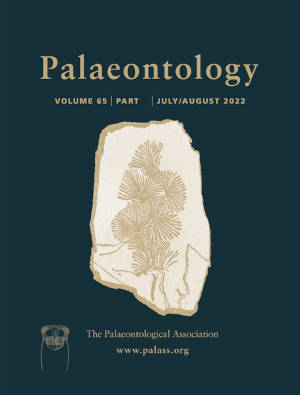Article: Relative skull size evolution in Mesozoic archosauromorphs: potential drivers and morphological uniqueness of erythrosuchid archosauriforms
Publication: Palaeontology
Volume:
65
Part:
3
Publication Date:
2022
Article number:
e12599
Author(s):
Jordan Bestwick, Pedro L. Godoy, Susannah C. R. Maidment, Martín D. Ezcurra, Mia Wroe, Thomas J. Raven, Joseph A. Bonsor, and Richard J. Butler
Abstract
Abstract Little is known about the large-scale evolutionary patterns of skull size relative to body size, and the possible drivers behind these patterns, in Archosauromorpha. For example, the large skulls of erythrosuchids, a group of non-archosaurian archosauromorphs from the Early and Middle Triassic, and of theropod dinosaurs are regarded as convergent adaptations for hypercarnivory. However, few investigations have explicitly tested whether erythrosuchid and theropod skulls are indeed disproportionately large for their body size, and whether this trend is driven by hypercarnivory. Here, we investigate archosauromorph relative skull size evolution, examining the scaling relationships between skull and body size of Palaeozoic and Mesozoic archosauromorphs using a robust phylogenetic framework and assessing the influence of potential drivers, such as taxonomy, diet, locomotory mode and inhabited biotope. Our results show that archosauromorph relative skull sizes are largely determined by phylogeny and that the other drivers have much weaker levels of influence. We find negative allometric scaling of skull size with respect to body size when all studied archosauromorphs are analysed. Within specific groups, skull size scales with positive allometry in non-archosaurian archosauromorphs and, interestingly, scales isometrically in theropods. Ancestral reconstructions of skull–femur size ratio reveal a disproportionately large skull at the base of Erythrosuchidae and proportionately sized skulls at the bases of Theropoda, Carnosauria and Tyrannosauroidea. Relative skull sizes of erythrosuchids and theropods are therefore distinct from each other, indicating that disproportionately large skulls are not a prerequisite for hypercarnivory in archosauromorphs, and that erythrosuchids exhibit a bauplan unique among terrestrial Mesozoic carnivores.
